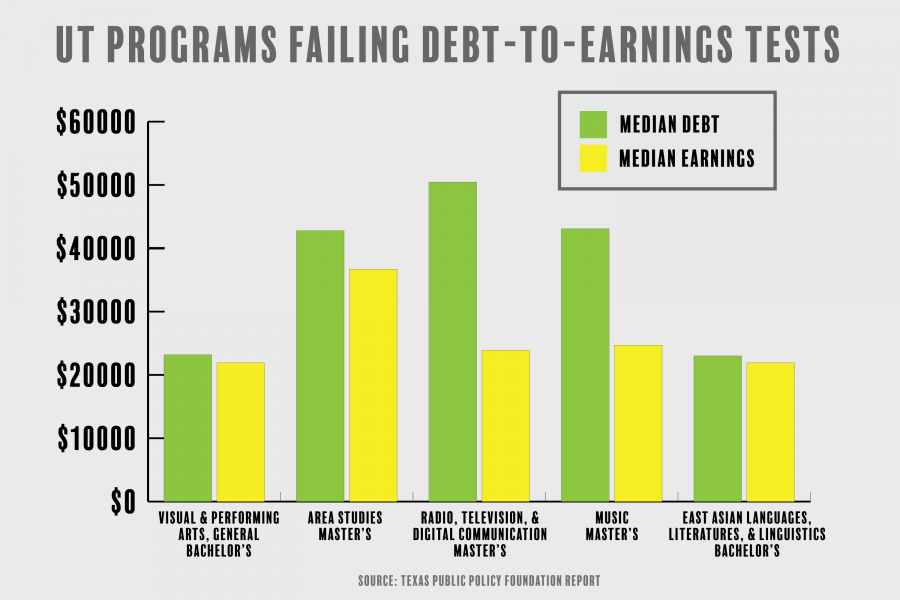Six programs at UT-Austin failed debt-to-earnings tests, according to a student debt report by the Texas Public Policy Foundation.
According to the report, the foundation used modified versions of tests developed by the Obama administration that compare student debt with entry-level salaries. The report surveyed debt from the classes of 2016 and 2017 and the earnings made by the classes of 2015 and 2016 in their first year after graduating from Texas public colleges and universities.
The UT-Austin programs that fail the debt-to-earnings test include bachelor’s degrees in visual and performing arts; East Asian languages, literatures and linguistics; and master’s degrees in drama/theatre arts and stagecraft; area studies; radio, television and digital communication; and music.
“Programs where debt is too high relative to earnings earn a ‘Fail’ rating,” the report said. “Students graduating from these programs who borrowed the median amount will have great difficulty repaying their loans, and some will simply not be able to repay them.”
UT-Austin had the second-highest number of failing programs, with Prairie View A&M University having nine failing programs, according to the report. UT-Austin was followed by Stephen F. Austin State University, Texas Southern University and UT-El Paso, all of which had five failing programs each.
Alicia Dietrich, communications director for the College of Fine Arts, said the data does not represent the full picture of what a graduate can earn.
“A salary in an entry-level job (in any field) is, of course, not going to reflect what the graduate will be making five or 10 years after they graduate as they advance in their careers,” Dietrich said.
Ann Stevens, dean of the College of Liberal Arts, said in an email the report does not accurately represent graduates’ ability to repay debts.
“If earnings grow, even modestly, in the decade after graduation, using only one year of earnings may not give a fully accurate picture of how manageable the debt level will be,” Stevens said.
Kathleen Mabley, director of marketing and communication for the Moody College of Communication, said some of the programs mentioned by the report involve fields in which the graduates do not work for steady annual incomes.
“The data in the report by the Texas Public Policy Foundation are based on two years’ worth of graduates and one year of (their) earnings data, which is a limited view,” Mabley said. “Some graduates in these fields may be employed for projects or movies that do not provide a year-round salary.”
Christina Staggs, a radio, television and film alumna, said the value of her degree did not lie in her classes but the people she met and the opportunities she was afforded.
“Getting into the film industry … is definitely a career path based on connections and communications with people that are also in the industry,” Staggs said. “(The University) was really good about having staff, advisers and mentors that could guide you into making those connections and finding those opportunities.”



















